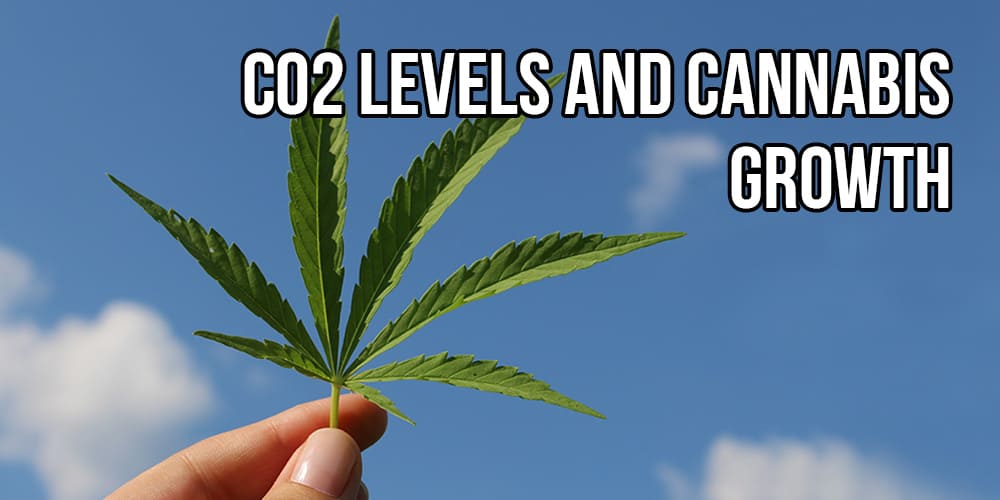CO2 Levels and Cannabis Growth

Cannabis cultivation has evolved remarkably, with growers continually seeking innovative methods to enhance the quality and quantity of their yield. Among these methods, manipulating carbon dioxide (CO2) levels has emerged as a pivotal factor in cannabis growth. This article delves into the intricate relationship between CO2 levels and cannabis cultivation, exploring the scientific principles, practical applications, and the potential impact on both the environment and the cannabis industry.
- Stages of Cannabis Plant Growth: A Journey from Seed to Harvest
- What Type of Cannabis Enthusiast Are You?
- Parts of the cannabis plant
CO2 and Cannabis Growth

Photosynthesis is the cornerstone of cannabis growth, including that of cannabis plants. This process involves plants taking in carbon dioxide (CO2) from the air, which they use in conjunction with sunlight and water to synthesize glucose. Glucose serves as a crucial energy source for the plant, driving various growth processes. Simultaneously, oxygen is produced as a by-product and released into the atmosphere. For cannabis plants, enhancing the rate of photosynthesis can lead to faster growth and, potentially, larger yields.
This is particularly significant, as photosynthesis forms the foundation for the plant’s overall health and productivity. Increasing CO2 concentrations can significantly boost this process, leading to more vigorous growth and development of the plant. In the context of cannabis cultivation, achieving the optimal level of CO2 is key for maximizing growth. While the ambient concentration of CO2 in the atmosphere is about 400 parts per million (ppm), cannabis plants thrive in environments where CO2 levels are higher.
Controlled environments like greenhouses can benefit from increasing CO2 levels to approximately 800 to 1500 ppm, thereby accelerating the photosynthesis process and promoting healthier, more robust cannabis growth. However, it is critical to maintain a delicate balance with these levels, as too high a concentration of CO2 can be harmful not only to the plants but also to the cultivators.
Immerse yourself in the deep, earthy embrace of APE Breath Premium Flower, an exceptional Indica strain highlighted by its subtle citrus undertones. This premium cannabis flower boasts a rich, pungent aroma with herbal and citrusy notes, leading to a profoundly relaxing effect that soothes the body and calms the mind.
Implementing CO2 Enrichment in Cannabis Cultivation

Implementing CO2 enrichment in cannabis cultivation involves a careful and informed approach. Growers need to take into account several critical factors to optimize the benefits of CO2. These factors include the specific growth stage of the cannabis plant, as different stages may have varying CO2 requirements. The size and design of the grow area also play a significant role, as they determine the volume of CO2 needed for effective enrichment. Additionally, the existing ventilation system is crucial, as it affects the distribution and concentration of CO2 within the grow space.
There are a variety of methods available for increasing CO2 levels in a cannabis growth environment, each with its own set of benefits and limitations. One common method is using compressed CO2 tanks, which can provide a controlled release of CO2 but may be costly over time. Another approach is the use of CO2 generators that burn fossil fuels like propane or natural gas to produce CO2, offering a more continuous supply but raising concerns about combustion by-products.
Alternatively, organic methods such as fermenting yeast provide a more environmentally friendly way to produce CO2, though they may not offer the same level of consistency and control as mechanical systems.
The Environmental Perspective

The practice of CO2 enrichment in cannabis cultivation, while beneficial for cannabis growth, also comes with environmental considerations. Utilizing CO2 generators that burn fossil fuels, a common method for increasing CO2 levels, contributes to the emission of greenhouse gases. These emissions are a major contributing factor to climate change, raising concerns about the long-term sustainability of such practices. Conscious of these environmental impacts, the cannabis cultivation industry faces the challenge of balancing growth enhancement techniques with ecological responsibility.
This dilemma has led to an increased focus on implementing more sustainable and environmentally friendly practices in cannabis cultivation, particularly in the area of CO2 enrichment. In response to these environmental concerns, some cannabis growers are exploring greener alternatives for CO2 enrichment. One such method involves harnessing naturally occurring CO2 from composting organic matter. This approach not only provides a renewable source of CO2 but also promotes waste recycling.
Another sustainable strategy is forming partnerships with industries that produce CO2 as a by-product of their operations. By utilizing this otherwise waste CO2, growers can reduce their environmental footprint while still enhancing their cannabis growth. These sustainable practices represent a growing trend in the industry, reflecting a commitment to environmental stewardship and responsible cultivation practices.
Embark on a potent escapade with our High Octane 10 original mini joints, each a 0.5-gram embodiment of strength. This highly regarded indica-dominant hybrid is renowned for its intense aroma and high potency. It provides a deeply soothing and euphoric effect, perfect for those who desire a strong yet balanced relaxation.
Economic Implications and Industry Trends

The implementation of CO2 enrichment in cannabis cultivation can offer significant economic advantages. By boosting the growth rates and increasing the yields of cannabis plants, this practice enables growers to maximize their productivity, leading to potentially higher profits. This aspect of cultivation has gained increasing attention as the cannabis industry continues to grow, fueled by the expanding legalization and the escalating demand for cannabis products.
As a result, many cultivators are adopting CO2 enrichment techniques as a means to enhance their competitive edge in the market, capitalizing on the improved growth characteristics that elevated CO2 levels can provide to their crops. On the other hand, the financial barriers associated with setting up and maintaining CO2 enrichment systems can be considerable, particularly for smaller-scale growers. The initial investment for equipment such as CO2 generators, monitoring systems, and safety measures, along with ongoing operational costs, can make it a challenging endeavor for smaller operations.
Consequently, the adoption of CO2 enrichment technology is often more feasible for larger, commercial-scale cannabis producers. However, the industry is continuously evolving, with advancements in CO2 delivery and monitoring technologies making these systems more efficient and increasingly accessible.
The Future of CO2 Enrichment in Cannabis Cultivation

The burgeoning cannabis industry has sparked a significant interest in advanced cultivation techniques, particularly CO2 enrichment, as a means to maximize yield and quality. As the market for cannabis expands globally, the drive to enhance productivity through scientific and technological advancements becomes increasingly important. Research in this field is continuously evolving, with a strong emphasis on developing sustainable and efficient cultivation practices.
This focus not only aims to optimize growth and yield but also to ensure that the methods used are environmentally responsible and economically viable, thereby supporting the long-term sustainability of the cannabis industry. In addition to its direct benefits for cultivation, the potential role of CO2 enrichment in addressing broader environmental concerns, such as climate change, is an intriguing subject for researchers. There is a growing interest in exploring how cannabis plants, with their enhanced capacity to absorb CO2 through enrichment techniques, could potentially serve as carbon sinks.
This concept posits that large-scale cannabis cultivation could contribute to carbon sequestration, thus mitigating some effects of climate change. However, this area of study is still in its infancy, and more comprehensive research is needed to fully understand the feasibility, effectiveness, and long-term impacts of using cannabis cultivation as a tool in climate change mitigation strategies.
Indulge in the vibrant taste of summer with our Strawberry 5 original mini joints, each meticulously crafted to 0.5 grams. This celebrated sativa uplifts and energizes, offering a distinctly natural strawberry flavor that combines a fresh berry aroma with a subtle earthy touch.


















